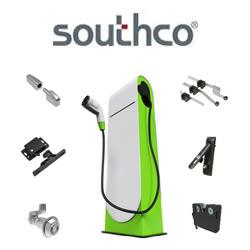Energy Monitoring Boosts Bottom Line for Small Businesses
Real-time View of Energy Consumption Gives Business Owners a Green Path to Savings
Bend, Ore. August 27, 2012 In today's challenging economic climate, small businesses are looking for every edge to keep their operations in the green. One area common to virtually all enterprises is a requirement for electricity which many business owners view as virtually a fixed overhead cost. But it doesn't have to be that way. Local contractor, Shawn Allen, president of EcoVentures NW has helped a number of businesses in the region make helpful reductions in their energy costs by installing real-time energy monitoring systems. Allen notes "Business owners often think that there's not much they can do about reducing their energy costs, but by monitoring usage in real time on a circuit-by-circuit basis, many are surprised at the energy hogs they find in their operations. New technologies in energy management can help to identify everything from equipment that is not operating optimally to devices left on unnecessarily to actual theft of electricity." As more utilities install smart meters and implement Time of Use (TOU) billing, the savings can become even more substantial as businesses find opportunities to shift energy use to off-peak times with dramatically lower billing rates.
United States Department of Energy (DOE) statistics show that commercial buildings account for 35 percent of U.S. (and 40 percent of global) electricity consumption and that approximately 30 percent of facility costs go to electricity, although this can vary greatly depending upon the type of business. The DOE Buildings Energy Data Book notes that "the top three end uses in the commercial sector are space heating, lighting, and space cooling, which represent close to half of commercial site energy consumption." What Allen and his customers have found is that those who have installed energy monitoring systems like those from EcoDog, Inc., showing how and where energy is used in real time, can reduce th eir energy use by as much as 25 percent or more compared to those who have no visibility to their energy use. Another key to the latest monitoring technology is having proactive notifications via email or text messaging based on actual billing rates from the utilities so that users can see real savings opportunities in dollars.
But Allen has observed that commercial customers are finding other novel ways to use energy monitoring to the advantage of both building owners and renters alike. He explained, "With detailed energy reports, landlords can show potential tenants what their utility bills will be or demonstrate how energy efficiency upgrades or alternative energy installations save on utility costs. In buildings that are built to LEED standards or have had energy efficient retrofits, building owners can use this information to justify how higher rents can still end up saving occupants money when utility savings are factored in."
To add further value to implementing energy monitoring capabilities, a recent article in Environmental Building News (21:8), reports that, "Laws mandating energy use disclosure are gaining steam in the U.S. as more cities and states seek to leverage these transparency requirements to drive energy savings and job creation." But savvy landlords can turn this type of mandate into money savings for themselves and their tenants. Allen notes that, "by teaming up to reduce operational costs, building managers can demonstrate to tenants how they are proactively helping their businesses thrive. This can be especially beneficial in multi-tenant buildings where the landlord can use energy monitoring to provide incentives to individual tenants for energy reduction efforts. In cases where multiple tenants share a meter, the landlord can opt to charge each separately to avoid the la ck of accountability in shared utility consumption."
EcoDog's FIDO Energy Watchdog is a hardware/software system that comprises an energy measuring module installed at the breaker panel that communicates through the building's existing power lines with a module linked to a PC via USB. Since it's installed at the breaker panel, the system is able to display energy usage detail at the circuit level using included software on the PC as well as remotely via text or e-mail. The software tracks energy consumption throughout the building & gives recommendations to the user on how to reduce electric costs based on consumption and the local utility billing structure. FIDO can also be used to monitor and coordinate alternative energy (solar, wind, generator, etc.) installations.
As utility rates increase in both cost and complexity, energy monitoring can become an important tool in maximizing revenue and minimizing tenant turnover.
About EcoVentures NW
Located in Bend, Oregon, EcoVentures NW (www.EcoVenturesNW.com) offers a customer service-oriented team dedicated to encouraging the use of sustainable building products that create, conserve or accurately measure energy consumption utilizing the latest available technologies. Their qualifications include: Sustainable Home Professional Certifications (SHP), Certified Sustainable Building Advisor (NSBA), Leadership in Energy & Environmental Design (LEED AP) and Certified Aging in Place Specialist (CAPS).
About EcoDog, Inc.
EcoDog, Inc. (www.EcoDogInc.com) recently awarded Building Products Green Product Award for 2010 for its FIDO Home Energy Watchdog System is committed to designing, building and making available the tools necessary for homeowners to easily and affordably monitor energy use, oversee alternative energy generation and control energy consumption to reduce homeowners' expenses while lowering demand for electricity.
Featured Product

